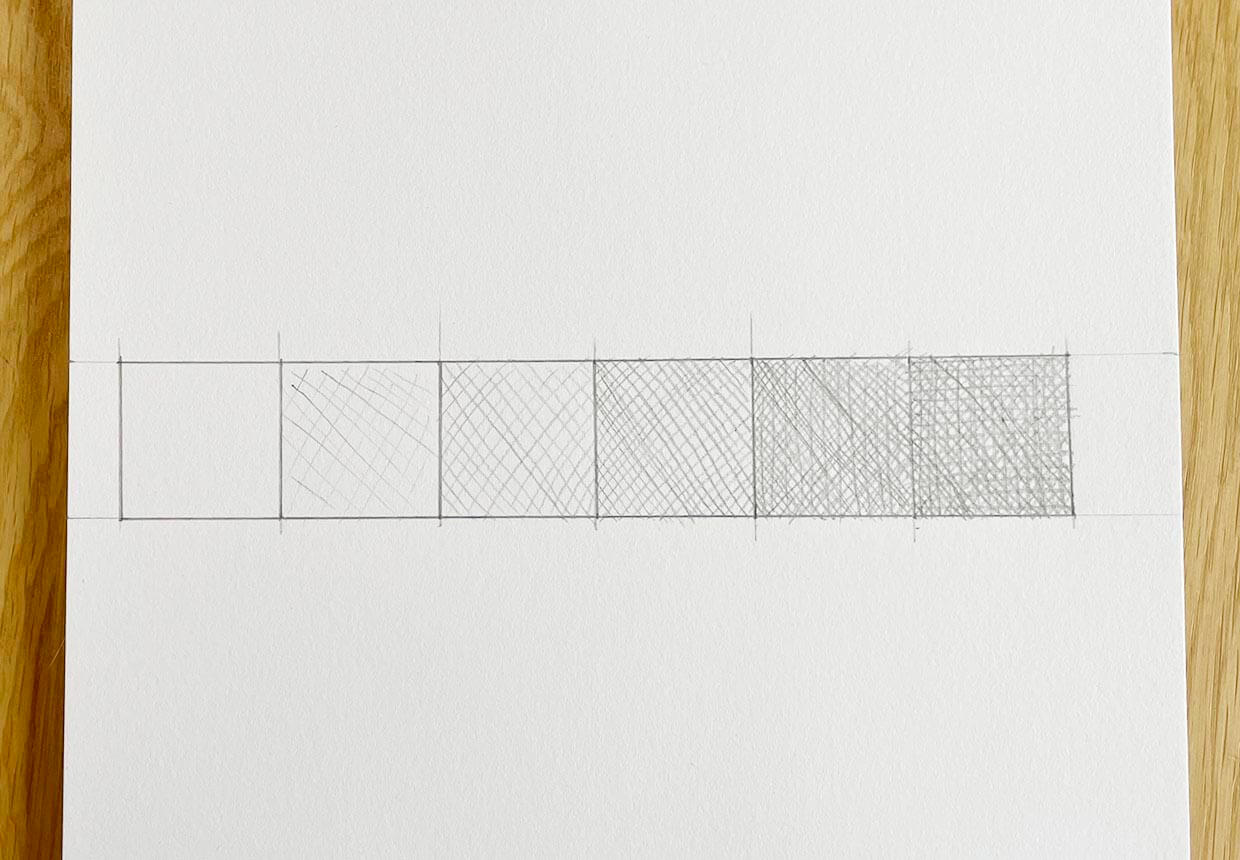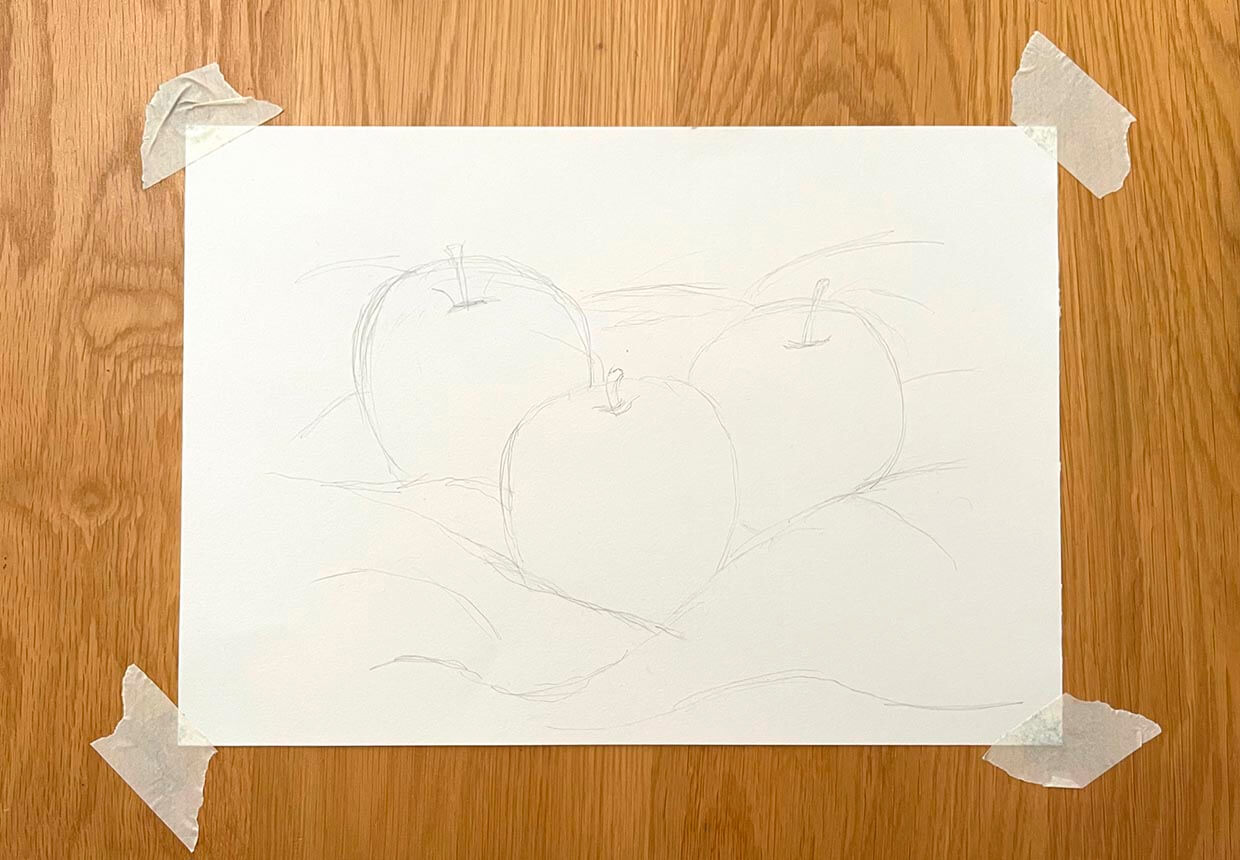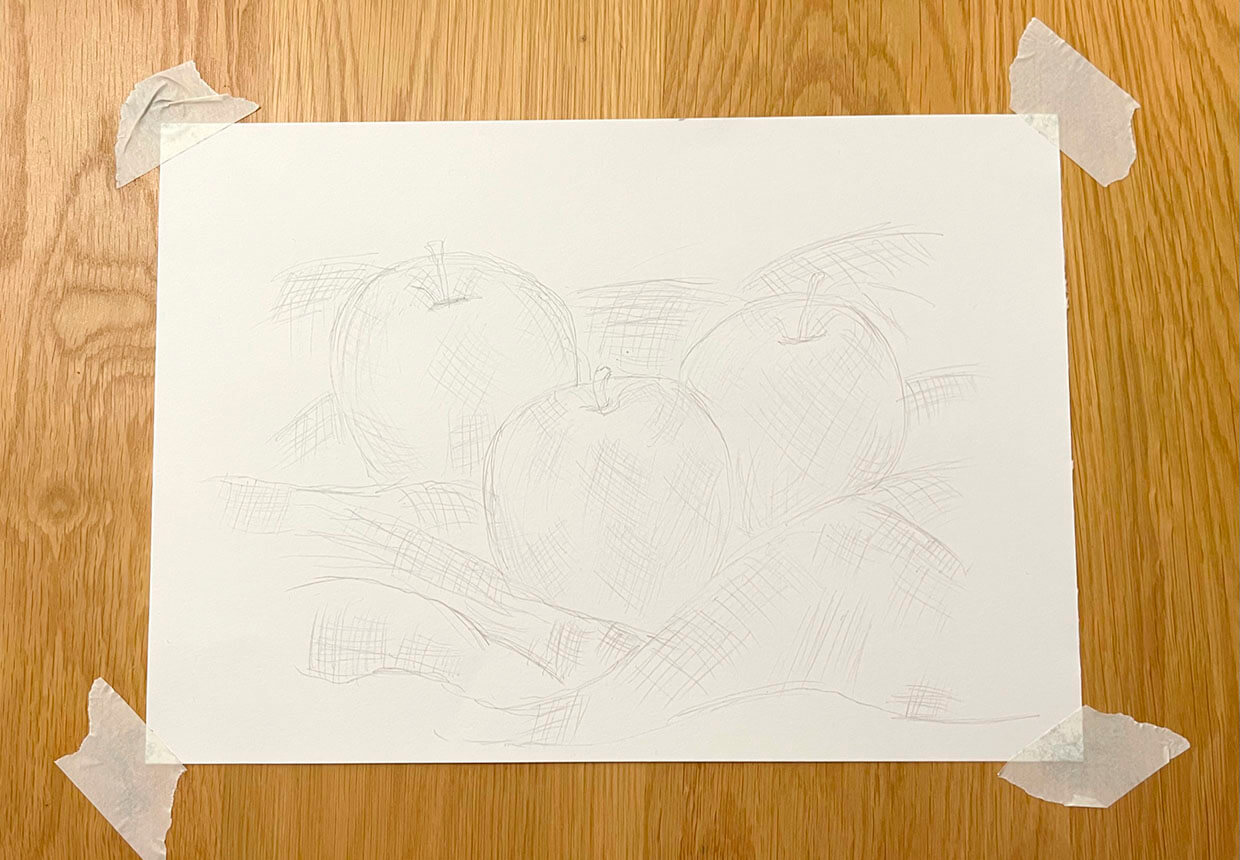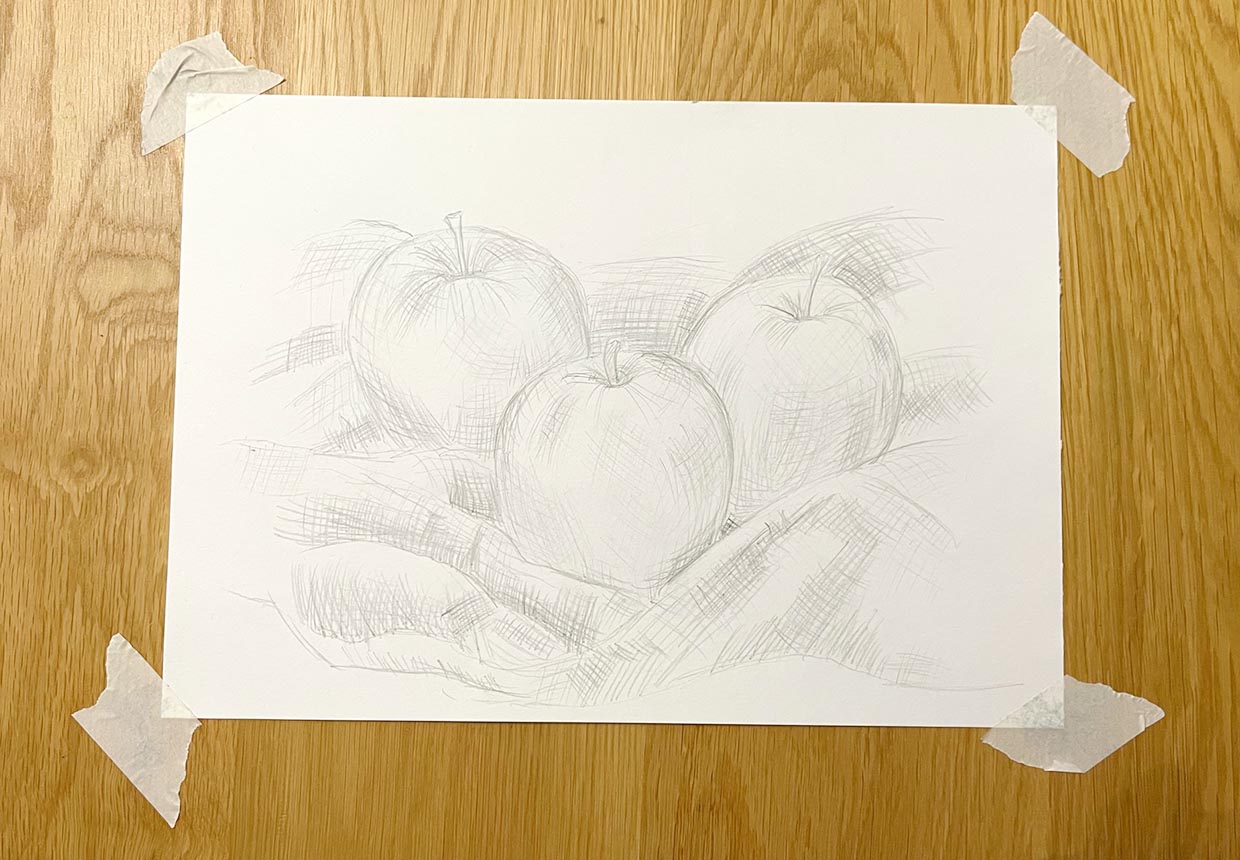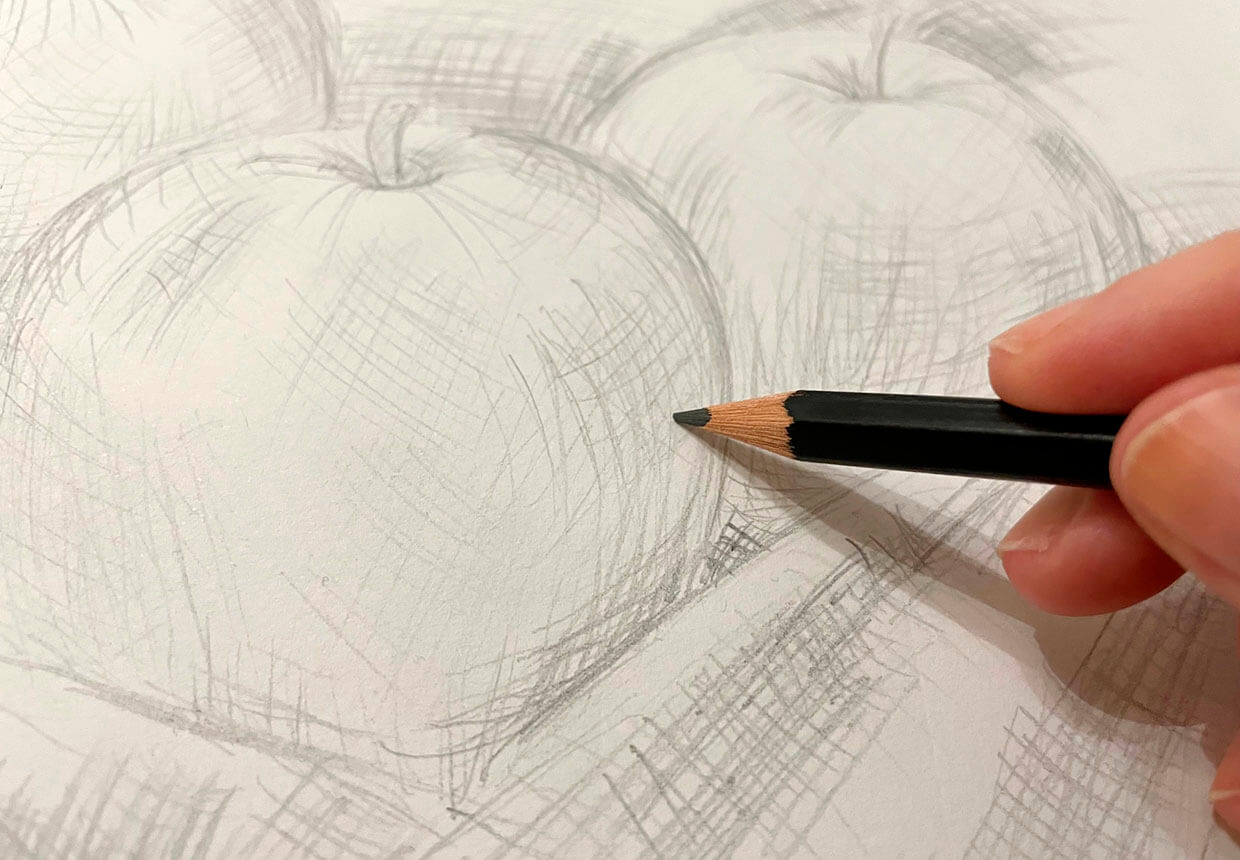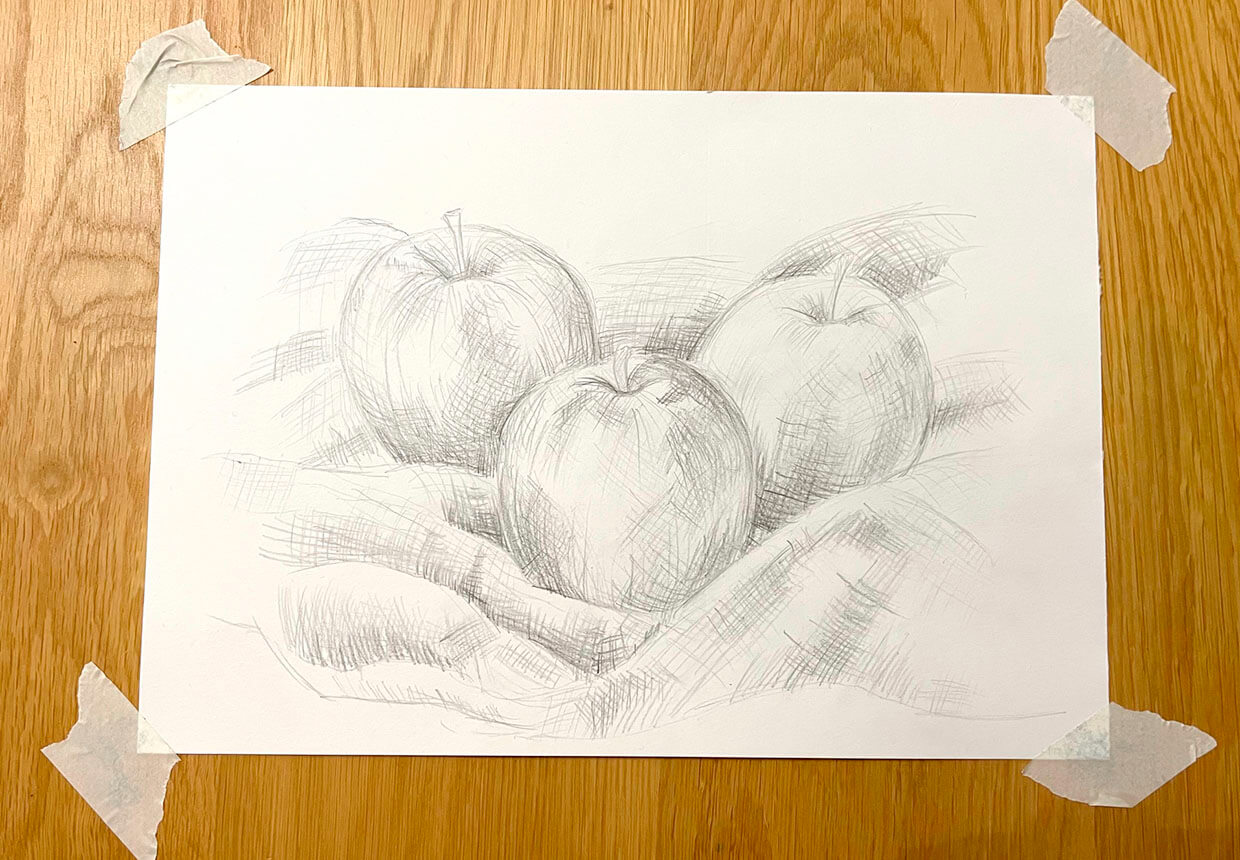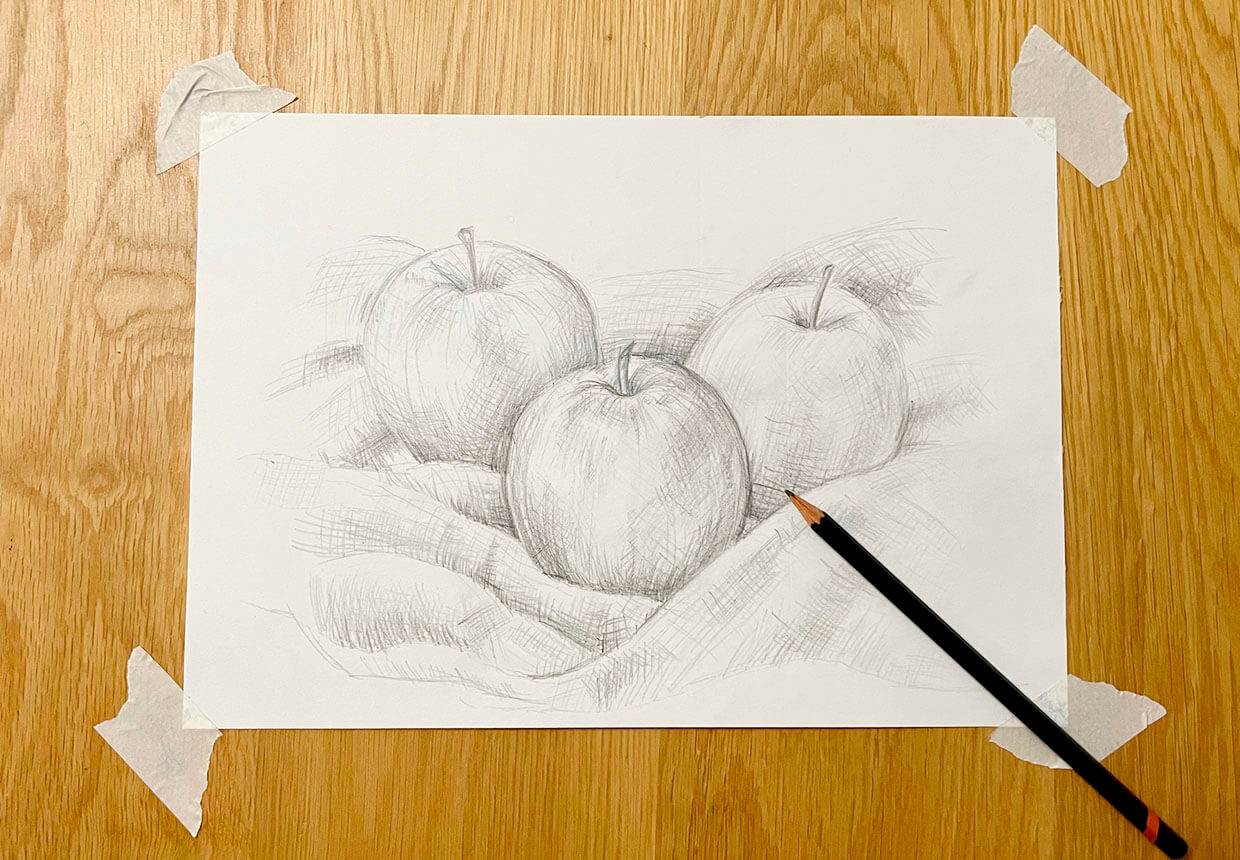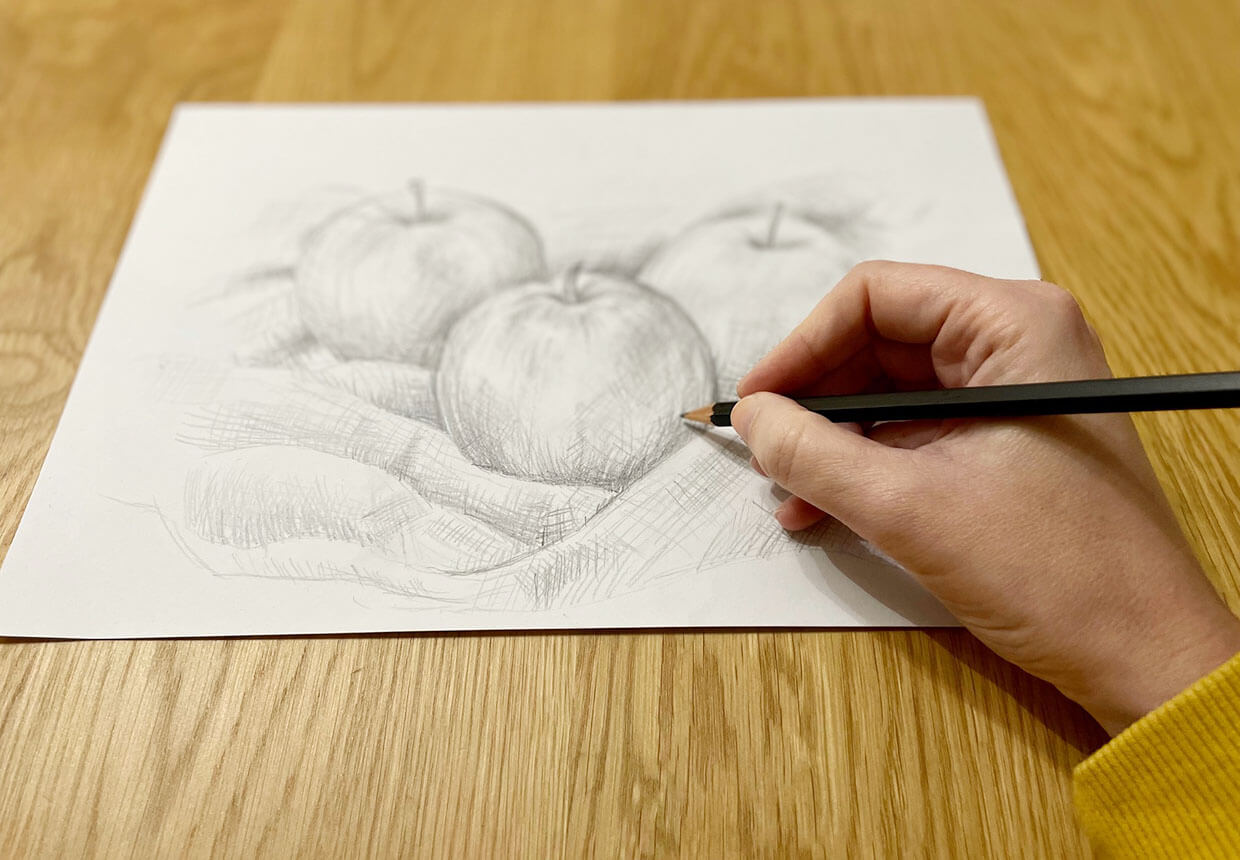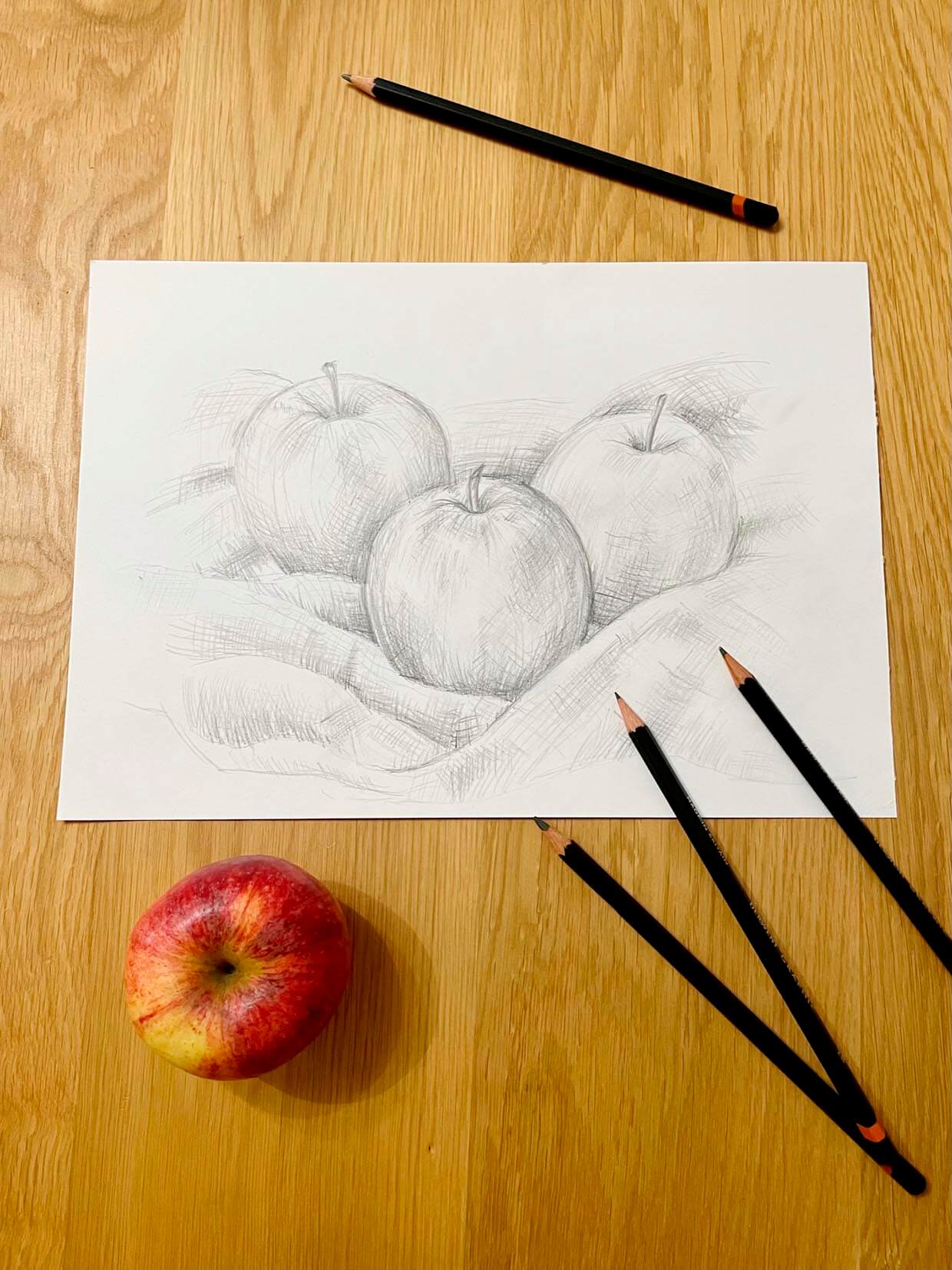If you’re looking to improve your pencil drawing skills, cross hatching is a brilliant shading technique to explore.
Cross hatching adds texture to your drawings, creating contrast and depth, making the technique an essential component for any sketch artist.
Cross hatching can also help to give you a better understanding of how to use light and shade in your drawings, as well as creative ways to add texture to your artwork.
When you’re a new artist defining your unique drawing style, it’s crucial to explore a variety of shading techniques, and cross hatching is no exception. Cross hatching looks tricky, but it’s actually very simple to master once you’ve learnt a few basic techniques. In this guide, we’ll show you how to cross hatch like a pro!
Read on to learn more about cross hatching art and have a go at a still life drawing project.
What is cross hatching?
Cross hatching is a style of drawing that uses criss-crossing lines to create shading and a sense of depth. The finished result often looks like a grid.
Cross hatching is a drawing style that’s been popular with artists and illustrators for centuries, as the technique creates striking effects with just a few lines. You can use cross hatching to draw everything from portraits, to still lifes or landscapes.
You can use pens or pencils for cross hatching, so it’s worth experimenting with both to see which you prefer.
The drawing below is by the 19th century artist John Everett Millais. It’s a really good example of how cross hatching can be used to create a detailed drawing. In this drawing, Everett Millais has used a combination of hatching and cross hatching marks with striking results. Try imitating his style in your own cross hatched drawings!
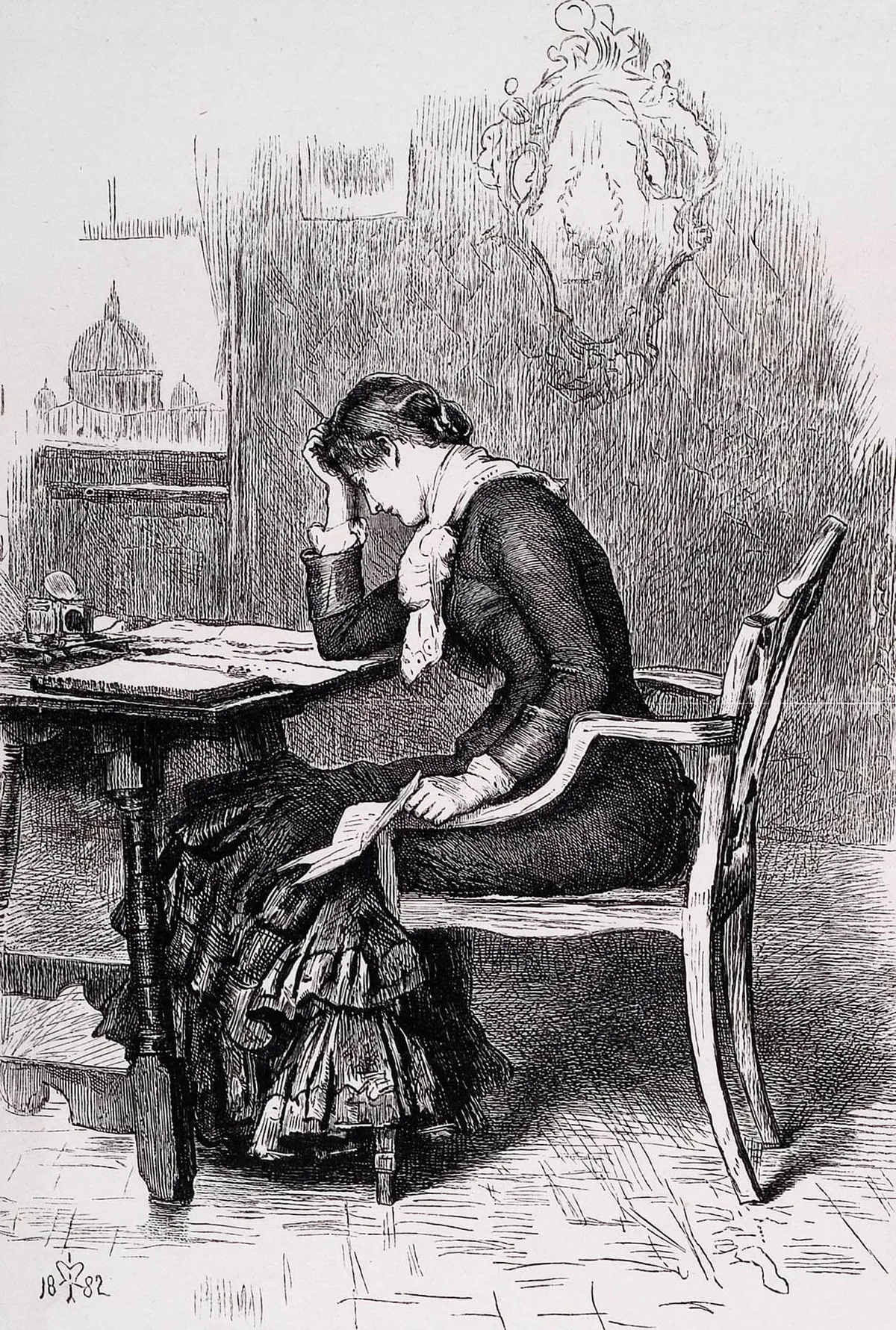
What’s the difference between hatching and cross hatching?
The term hatching is used when you draw lines in one direction only. Cross hatching is when you add lines perpendicular to your first set of lines, creating a cross.
Combine hatching and cross hatching together to maximise the depth and texture of your pictures. Generally speaking, hatching is best used for lighter areas of a picture.
Top tips for cross hatching
1. Practise first
Before you dive into your first cross-hatched drawing, have a go at outlining a shape first, such as a sphere or a cube. Try using both hatching and cross-hatching to create a 3D effect.
2. Create shading
When you’re cross hatching, it’s important to think about the positioning of your lines. If you keep the lines far apart, your drawing will look lighter, while closely drawn lines can create shadows.
3. Choose your values
Before you start cross hatching, create a value scale. Draw a line of squares and draw into them to create a range of tones from light to dark. Top tip: make darker shades by adding lines slanted at a different angle on top of your previous lines.
4. Vary your marks
The lines don’t need to be straight, so don’t feel as though you have to draw in one continuous line.
5. Play with the angles
Your lines don’t have to be rigidly horizontal or vertical, either. Switching up the angles can really bring your drawing to life!
6. Follow the lines
If you’re drawing a curved object such as an apple, bend your lines to reflect the shape of the object that you’re drawing. This will add dimension to your artwork.
How to become a better artist
Improve your sketching skills in minutes with our top 20 quick drawing tips.
7. Make monochrome art
Colours can be distracting when you’re trying to get to grips with the basics of cross hatching. Start with one colour for your first drawing, then move on to experimenting with a wider range of shades.
8. Fill in an outline
You can use cross hatching to fill in an outline – this is a good way to complete a drawing with just a few pencil marks and works very well for illustrations.
9. Thick and thin
Experiment with different line thicknesses on your drawing. Graphite pencils are great for this because you can use both the point of the pencil and the side of the tip. You could also try using fineliner pens in a range of nib sizes.
10. Think about your light source
When working on your drawing, think about where the light is coming from. For example, is the sun shining on the left of your picture? If so, then you’ll need to make the left side of your subject lighter than the right side. Understanding lighting will give your drawing depth.
11. Try speed drawing
Cross hatching can be a fun technique to try if you want to create a quick sketch, perhaps as a warm-up exercise before you get stuck into another project. Try giving yourself a time limit – it can really loosen up your drawing style.
Cross hatching materials
Before starting your first cross hatching art project, it’s a good idea to stock up on everything you’ll need to create a fabulous drawing. Check out our shopping list for some recommended supplies.

